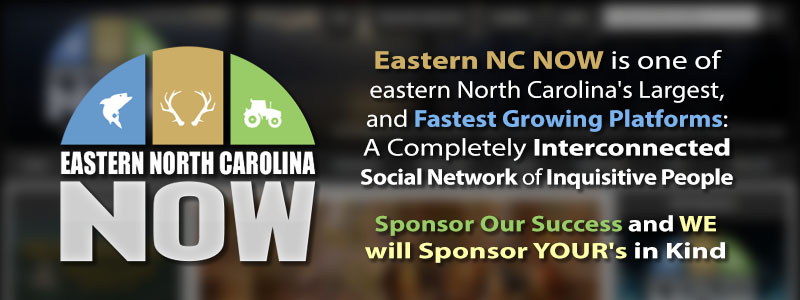Our Community Platform providing Essential Information to Know what is Real
Letís Improve Student Engagement
Published: Friday, June 16th, 2023 @ 1:16 pm
By: James G. Martin Center for Academic Renewal † ( More Entries )
By: James G. Martin Center for Academic Renewal † ( More Entries )
Publisher's Note: This post appears here courtesy of The James G. Martin Center. The author of this post is Harrington Shaw.
Undergraduate student engagement is on the decline. That's according to the publishing and research firm Wiley, which, in February, released a "State of the Student" survey indicating that student engagement remains a "significant challenge" as universities have returned to in-person instruction. Wiley's researchers found that more schools are facing enrollment and retention issues, as students are unsure which programs to pursue amid economic and emotional insecurity. Alarmingly, more than half of surveyed undergraduates indicated that they struggle to "stay engaged and interested in their classes," while nearly half are concerned about keeping up with coursework.
As Inside Higher Ed noted in its own coverage of the study, students' responses indicated a strong desire for a greater career-preparatory focus in their college classes. Wiley reported that students are "looking for current, relevant content that's applicable to the real world and promotes interaction." One-quarter of students stated that their educational experience would be improved if professors focused more on the applications of course material rather than on theoretical study.
Students also expressed a desire for more "company-led projects," demonstrating their increasing focus on job skills, work experience, and professional certificate exam preparation. Activities like case studies, interactions with professionals, and workplace simulations were all suggested by students as productive uses of their instructional time.
There are, of course, solutions to this student engagement crisis, some of which are already in motion. First, higher-education institutions should work to reduce costs so that students can focus on school without having to work outside of class to afford tuition. Enabling students to spend more time studying and socializing will empower them to better understand material and meaningfully participate in class, in addition to forming more tightly knit learning communities.
Second, and as Wiley points out, instructors should endeavor to teach their students about the positive impacts of the programs they are in and the work they are doing. Since survey data indicated that many students' concerns about their collegiate work centered around the meaningfulness of available careers, communicating the valuable lifelong impacts of students' majors and minors could boost engagement.
Unfortunately, it seems that many institutions fail to properly educate students about the value of a college education. Dr. Art Carden recently wrote "A Response to the Cynical Student" for the Martin Center, lamenting that students often deride the foundational teachings of history, philosophy, or literature as "impractical." It is likely that this pervasive attitude is itself depressing student focus and engagement.
Those who believe in the power of liberal education must articulate its value to students and inspire its pursuit. In an era when many students entering college enroll for instrumental purposes (under a presumption that a degree is a prerequisite for occupational advancement), the intrinsic value of higher education must be made known.
It is utterly unsurprising that students are disengaged in the classroom when they believe that their four years on campus are a mere ritualistic chore that must be completed in order to begin a career. The desire for more occupational training and pre-licensing preparation in the classroom is a reflection of this misguided approach to higher education.
While there is a growing conflict between traditional liberal education and career-preparatory training, we may be witnessing the beginning of a cultural shift, in which employers relax their insistence that applicants possess college degrees. Google, Tesla, and IBM have recently dropped college-degree requirements as part of a growing trend of reducing "degree inflation." This may provide universities with an opportunity to return to traditional education for intellectually curious students, while allowing those interested in promptly initiating careers to bypass academia altogether.
If universities are effective in articulating the life-changing value of a rigorous liberal education, if tuition costs and student-debt concerns are addressed, and if young adults are empowered to enter the workforce through skills-based rather than degree-based hiring, college classrooms will likely become much livelier and more engaged centers of learning.
Harrington Shaw is an intern at the James G. Martin Center for Academic Renewal and a junior studying economics and philosophy at UNC-Chapel Hill.
Go Back
Undergraduate student engagement is on the decline. That's according to the publishing and research firm Wiley, which, in February, released a "State of the Student" survey indicating that student engagement remains a "significant challenge" as universities have returned to in-person instruction. Wiley's researchers found that more schools are facing enrollment and retention issues, as students are unsure which programs to pursue amid economic and emotional insecurity. Alarmingly, more than half of surveyed undergraduates indicated that they struggle to "stay engaged and interested in their classes," while nearly half are concerned about keeping up with coursework.
As Inside Higher Ed noted in its own coverage of the study, students' responses indicated a strong desire for a greater career-preparatory focus in their college classes. Wiley reported that students are "looking for current, relevant content that's applicable to the real world and promotes interaction." One-quarter of students stated that their educational experience would be improved if professors focused more on the applications of course material rather than on theoretical study.
Students also expressed a desire for more "company-led projects," demonstrating their increasing focus on job skills, work experience, and professional certificate exam preparation. Activities like case studies, interactions with professionals, and workplace simulations were all suggested by students as productive uses of their instructional time.
There are, of course, solutions to this student engagement crisis, some of which are already in motion. First, higher-education institutions should work to reduce costs so that students can focus on school without having to work outside of class to afford tuition. Enabling students to spend more time studying and socializing will empower them to better understand material and meaningfully participate in class, in addition to forming more tightly knit learning communities.
Second, and as Wiley points out, instructors should endeavor to teach their students about the positive impacts of the programs they are in and the work they are doing. Since survey data indicated that many students' concerns about their collegiate work centered around the meaningfulness of available careers, communicating the valuable lifelong impacts of students' majors and minors could boost engagement.
Unfortunately, it seems that many institutions fail to properly educate students about the value of a college education. Dr. Art Carden recently wrote "A Response to the Cynical Student" for the Martin Center, lamenting that students often deride the foundational teachings of history, philosophy, or literature as "impractical." It is likely that this pervasive attitude is itself depressing student focus and engagement.
Those who believe in the power of liberal education must articulate its value to students and inspire its pursuit. In an era when many students entering college enroll for instrumental purposes (under a presumption that a degree is a prerequisite for occupational advancement), the intrinsic value of higher education must be made known.
It is utterly unsurprising that students are disengaged in the classroom when they believe that their four years on campus are a mere ritualistic chore that must be completed in order to begin a career. The desire for more occupational training and pre-licensing preparation in the classroom is a reflection of this misguided approach to higher education.
While there is a growing conflict between traditional liberal education and career-preparatory training, we may be witnessing the beginning of a cultural shift, in which employers relax their insistence that applicants possess college degrees. Google, Tesla, and IBM have recently dropped college-degree requirements as part of a growing trend of reducing "degree inflation." This may provide universities with an opportunity to return to traditional education for intellectually curious students, while allowing those interested in promptly initiating careers to bypass academia altogether.
If universities are effective in articulating the life-changing value of a rigorous liberal education, if tuition costs and student-debt concerns are addressed, and if young adults are empowered to enter the workforce through skills-based rather than degree-based hiring, college classrooms will likely become much livelier and more engaged centers of learning.
Harrington Shaw is an intern at the James G. Martin Center for Academic Renewal and a junior studying economics and philosophy at UNC-Chapel Hill.
Latest Op-Ed & Politics
|
leftwing ideology can kill
Published: Friday, April 26th, 2024 @ 8:37 pm
By: John Steed
|
|
Governor expected to sign into law
Published: Friday, April 26th, 2024 @ 1:48 pm
By: John Steed
|
|
Atheist Soros, although born Jewish, was Nazi collaborator in Hungary in WWII
Published: Friday, April 26th, 2024 @ 11:58 am
By: John Steed
|
|
anti-immigration conservative nationalist beats Social Democrat incumbent 2 to 1
Published: Friday, April 26th, 2024 @ 9:19 am
By: John Steed
|
|
protecting children and parents from gender ideology promoters
Published: Friday, April 26th, 2024 @ 6:45 am
By: John Steed
|
|
Biden wants to push this in public schools and Gov. deSantis says NO
Published: Thursday, April 25th, 2024 @ 9:19 pm
By: John Steed
|
|
eve 45% of Latinos support mass deportation
Published: Thursday, April 25th, 2024 @ 12:40 pm
By: John Steed
|
|
this at the time that pro-Hamas radicals are rioting around the country
Published: Thursday, April 25th, 2024 @ 8:01 am
By: John Steed
|
|
Pro death roundtable
Published: Wednesday, April 24th, 2024 @ 12:39 pm
By: Countrygirl1411
|
|
populist / nationalist anti-immigration AfD most popular party among young voters, CDU second
Published: Wednesday, April 24th, 2024 @ 11:25 am
By: John Steed
|
|
political scheme behhind raid on Mar-a-Lago
Published: Wednesday, April 24th, 2024 @ 9:16 am
By: John Steed
|
|
how many of these will come to North Carolina?
Published: Tuesday, April 23rd, 2024 @ 1:32 pm
By: John Steed
|

























